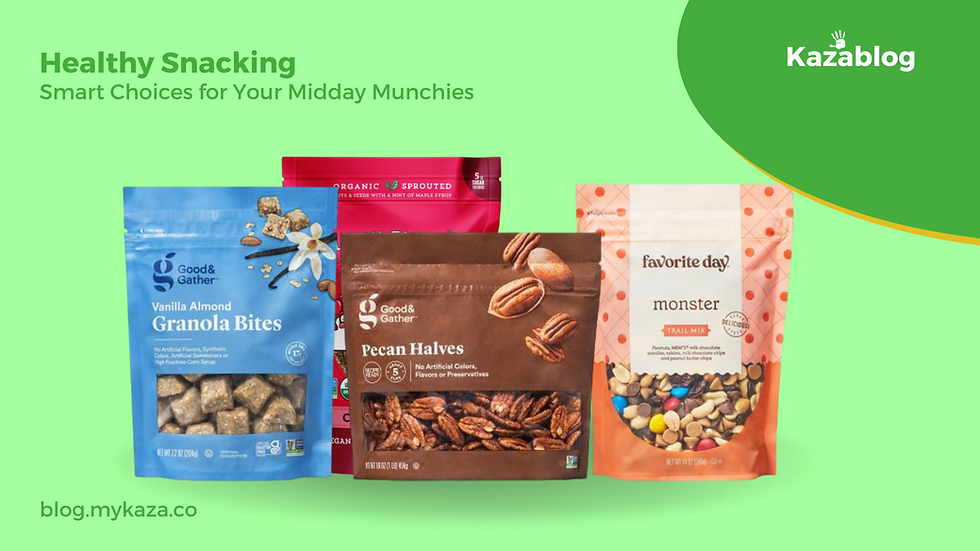Understanding Food Labels: Making Informed Choices at the Grocery Store
- Goodness Chimezie
- Oct 4, 2023
- 2 min read
Hey there,
I hope your week is going well.
Do you ever find yourself standing in the grocery store aisle, squinting at food labels and feeling overwhelmed by the jumble of information? You're not alone. Understanding food labels is a crucial skill for making informed and healthy choices.
1. Start with the Serving Size
The serving size is your starting point. It tells you how much of the product the nutritional information refers to. Be sure to compare this with the amount you actually consume to gauge the nutritional value accurately.
2. Calories Count
Next, take a look at the calorie count. This number represents the energy the food provides per serving. Consider your daily calorie needs to determine if the product fits into your diet.
3. Check for Macronutrients
Fats: Look for healthy unsaturated fats and limit saturated and trans fats. Aim for products with low or no trans fats.
Carbohydrates: Pay attention to fiber content, which aids digestion. Opt for complex carbohydrates like whole grains.
Proteins: Choose products with ample protein, especially if you're active. It helps repair and build tissues.
4. Sugar Matters
Sugar can hide under various names, including sucrose, fructose, and corn syrup. Look for products with lower sugar content, especially in processed foods like cereals and snacks.
5. Sodium Awareness
High sodium intake can lead to health issues. Select products with lower sodium levels, especially if you have high blood pressure or are watching your salt intake.

6. Get to Know the Ingredients List
Ingredients are listed in descending order by weight, with the most abundant ingredient first. If you see unfamiliar or unpronounceable ingredients, it might be a sign that the product is highly processed. Aim for shorter ingredient lists with whole, recognizable foods.
7. Look for Nutrient Content Claims
Keep an eye out for nutrient content claims like "low-fat," "high-fiber," or "sugar-free." These labels provide quick insights into the product's nutritional value.
8. Beware of Marketing Hype
Don't be swayed by flashy packaging or marketing claims. Phrases like "natural," "organic," or "made with real fruit" can be misleading. Always verify the information on the label.
9. Pay Attention to Allergen Warnings
If you or your family members have food allergies or sensitivities, be vigilant about allergen warnings. Food labels must disclose common allergens like peanuts, tree nuts, soy, wheat, milk, eggs, and fish.
10. Understand Date Labels
Don't confuse "sell by," "use by," and "best by" dates. These dates are about food quality, not safety. "Use by" dates are the most critical for food safety, while "best by" dates indicate optimal quality.
In conclusion, armed with this understanding of food labels, you can confidently navigate the grocery store aisles. Remember that making informed food choices is an essential step toward a healthier lifestyle for you and your family. Prioritize whole, minimally processed foods, and don't forget to read those labels—your health and well-being are worth it!
Join our X (Twitter) space to be part of the conversation we'd like to hear from you!







Comments